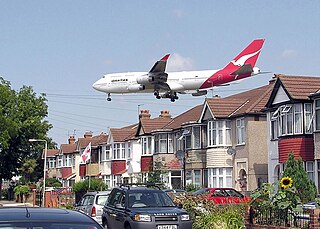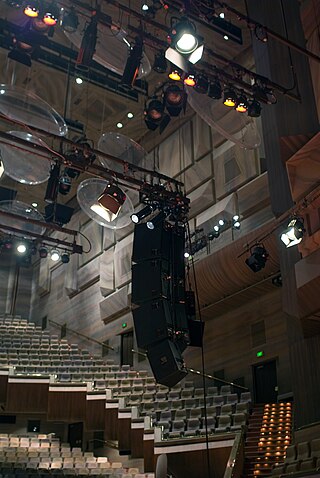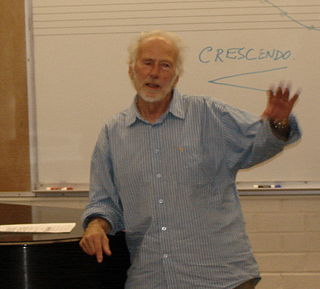
Acoustics is a branch of physics that deals with the study of mechanical waves in gases, liquids, and solids including topics such as vibration, sound, ultrasound and infrasound. A scientist who works in the field of acoustics is an acoustician while someone working in the field of acoustics technology may be called an acoustical engineer. The application of acoustics is present in almost all aspects of modern society with the most obvious being the audio and noise control industries.

Noise pollution, or sound pollution, is the propagation of noise or sound with ranging impacts on the activity of human or animal life, most of which are harmful to a degree. The source of outdoor noise worldwide is mainly caused by machines, transport, and propagation systems. Poor urban planning may give rise to noise disintegration or pollution, side-by-side industrial and residential buildings can result in noise pollution in the residential areas. Some of the main sources of noise in residential areas include loud music, transportation, lawn care maintenance, construction, electrical generators, wind turbines, explosions, and people.

Acoustical engineering is the branch of engineering dealing with sound and vibration. It includes the application of acoustics, the science of sound and vibration, in technology. Acoustical engineers are typically concerned with the design, analysis and control of sound.

Raymond Murray Schafer was a Canadian composer, writer, music educator, and environmentalist perhaps best known for his World Soundscape Project, concern for acoustic ecology, and his book The Tuning of the World (1977). He was the first recipient of the Jules Léger Prize in 1978.
Natural sounds are any sounds produced by non-human organisms as well as those generated by natural, non-biological sources within their normal soundscapes. It is a category whose definition is open for discussion. Natural sounds create an acoustic space.
Sound art is an artistic activity in which sound is utilized as a primary medium or material. Like many genres of contemporary art, sound art may be interdisciplinary in nature, or be used in hybrid forms. According to Brandon LaBelle, sound art as a practice "harnesses, describes, analyzes, performs, and interrogates the condition of sound and the process by which it operates."
Acoustic ecology, sometimes called ecoacoustics or soundscape studies, is a discipline studying the relationship, mediated through sound, between human beings and their environment. Acoustic ecology studies started in the late 1960s with R. Murray Schafer a musician, composer and former professor of communication studies at Simon Fraser University and had the help of his team at Simon Fraser University as part of the World Soundscape Project. The original WSP team included Barry Truax and Hildegard Westerkamp, Bruce Davies and Peter Huse, among others. The first study produced by the WSP was titled The Vancouver Soundscape. The interest in this area grew enormously after this pioneer and innovative study and the area of acoustic ecology raised the interest of researchers and artists all over the world. In 1993, the members of the by now large and active international acoustic ecology community formed the World Forum for Acoustic Ecology.
Sound studies is an interdisciplinary field that to date has focused largely on the emergence of the concept of "sound" in Western modernity, with an emphasis on the development of sound reproduction technologies. The field first emerged in venues like the journal Social Studies of Science by scholars working in science and technology studies and communication studies; it has however greatly expanded and now includes a broad array of scholars working in music, anthropology, sound art, deaf studies, architecture, and many other fields besides. Important studies have focused on the idea of a "soundscape", architectural acoustics, nature sounds, the history of aurality in Western philosophy and nineteenth-century Colombia, Islamic approaches to listening, the voice, studies of deafness, loudness, and related topics. A foundational text is Jonathan Sterne's 2003 book "The Audible Past", though the field has retroactively taken as foundational two texts, Jacques Attali's Noise: The Political Economy of Music (1985) and R. Murray Schafer's The Tuning of the World (1977).

Bernard L. Krause is an American musician and soundscape ecologist. In 1968, he founded Wild Sanctuary, an organization dedicated to the recording and archiving of natural soundscapes. Krause is an author, a bio-acoustician, a speaker, and natural sound artist who coined the terms geophony, biophony, and anthropophony.
Hildegard Westerkamp is a Canadian composer, radio artist, teacher and sound ecologist of German origin. She studied flute and piano at the Conservatory of Music in Freiburg, West Germany from 1966 to 1968 and moved to Canada in 1975. She received a Bachelor of Music from the University of British Columbia in 1972 and a Master of Arts from Simon Fraser University in 1988. She taught acoustic communication at Simon Fraser University from 1982 to 1991.
British Library Sounds is a British Library service providing free online access to a diverse range of spoken word, music and environmental sounds from the British Library Sound Archive. Anyone with web access can use the service to search, browse and listen to 50,000 digitised recordings. Playback and download of an additional 22,000 recordings is available to Athens or Shibboleth users in UK higher and further education. The service was originally launched with funding by the Jisc.
Biomusic is a form of experimental music which deals with sounds created or performed by non-humans. The definition is also sometimes extended to include sounds made by humans in a directly biological way. For instance, music that is created by the brain waves of the composer can also be called biomusic as can music created by the human body without the use of tools or instruments that are not part of the body.
The following outline is provided as an overview of and topical guide to acoustics:
Schizophonia is a term coined by R. Murray Schafer to describe the splitting of an original sound and its electroacoustic reproduction. This concept comes from the invention of electroacoustic equipment for the transmission of sound, which meant that any sound could be recorded and sent anywhere around the world. Originally, that was not possible, as every sound was an original and could only be heard once. Schizophonia is the separation of this native sound and the recording of it; and the term focusses on the detrimental effects of this for individuals and societies at large.
The World Soundscape Project (WSP) was an international research project founded by Canadian composer R. Murray Schafer in the late 1960s at Simon Fraser University. The project initiated the modern study of acoustic ecology. Its ultimate goal is "to find solutions for an ecologically balanced soundscape where the relationship between the human community and its sonic environment is in harmony." The practical manifestations of this goal include education about the soundscape and noise pollution, in addition to the recording and cataloguing of international soundscapes with a focus on preservation of soundmarks and dying sounds and sound environments. Publications which emerged from the project include The Book of Noise (1968) and The Tuning of the World (1977), both by Schafer, as well as the Handbook for Acoustic Ecology (1978) by Barry Truax. The project has thus far resulted in two major tours, in Canada and Europe, the results of which comprise the World Soundscape Library. Notable members included John Oswald, Howard Broomfield, Bruce Davis, Peter Huse, Barry Truax and Hildegard Westerkamp.

Soundscape ecology is the study of the acoustic relationships between living organisms, human and other, and their environment, whether the organisms are marine or terrestrial. First appearing in the Handbook for Acoustic Ecology edited by Barry Truax, in 1978, the term has occasionally been used, sometimes interchangeably, with the term acoustic ecology. Soundscape ecologists also study the relationships between the three basic sources of sound that comprise the soundscape: those generated by organisms are referred to as the biophony; those from non-biological natural categories are classified as the geophony, and those produced by humans, the anthropophony.
Ecomusicology is an area of study that explores the relationships between music or sound, and the natural environment. It is a study which encompasses a variety of academic disciplines including musicology, biology, ecology and anthropology. Ecomusicology combines these disciplines to explore how sound is produced by natural environments and, more broadly how cultural values and concerns about nature are expressed through sonic mediums. Ecomusicology explores the ways that music is composed to replicate natural imagery, as well as how sounds produced within the natural environment are used within musical composition. Ecological studies of sounds produced by animals within their habitat are also considered to be part of the field of ecomusicology. In the 21st century, studies within the field the ecomusicology have also become increasingly interested in the sustainability of music production and performance.
Sound maps are digital geographical maps that put emphasis on the sonic representation of a specific location. Sound maps are created by associating landmarks and soundscapes.
A soundwalk is a walk with a focus on listening to the environment. The term was first used by members of the World Soundscape Project under the leadership of composer R. Murray Schafer in Vancouver in the 1970s. Hildegard Westerkamp, from the same group of artists and founder of the World Forum of Acoustic Ecology, defines soundwalking as "... any excursion whose main purpose is listening to the environment. It is exposing our ears to every sound around us no matter where we are."
David Monacchi is an Italian sound artist, researcher and eco-acoustic composer, best known for his multidisciplinary project Fragments of Extinction, patented periphonic device, the Eco-Acoustic Theatre, and award-winning music and sound-art installations.







